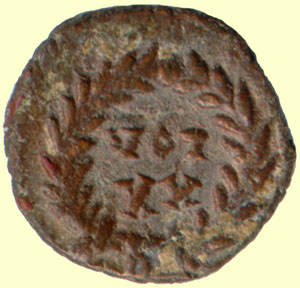 Gallery Thumbs -
Previous Image -
Next Image
Gallery Thumbs -
Previous Image -
Next ImageFor an example of a nice collection of Fifth Century types assembled by Harvard University, see A Catalog of Late Roman Coins in the Dumbarton Oaks Collection and in the Whittemore Collection. The volume is currently (May, 1998) out of print, but may possibly be available at a major university library or on the reference shelves of a major dealer in late Roman coins. Often, this kind of scholarly work is published in a printing of only a thousand or a few thousand, and when the printing is sold out, they are simply gone. If the interested collector or scholar has an opportunity to examine a copy of Dumbarton Oaks, it is to be considered a major treat.
There are a couple of curious phenomena that the potential collector of late Roman coinage will encounter early on in his or her experience. The gold is much more common than the bronze in nice condition even though it is more expensive just because it is gold. In fact, there are some gold issues of the Fifth century that are not scarce at all, being available beginning at a couple of hundred dollars from at least one major dealer any morning you choose to call up an order. Another surprising trend that runs contrary to what is considered conventional wisdom in the U. S. coin collecting field is that the old, cruddy lump of copper found in a dealer's junk box for under ten dollars is a real rarity and deserving of an honourable place in any collection for the political times and economic circumstances which it represents. Another extremely pleasant surprise is that many dealers, including the ones who are quite knowledgeable about Late Roman coins, are not out to gouge the collector who is looking for some of the really unique pieces from this period. A couple of examples come to mind. The author has spent many satisfying hours examining the stock and just swapping stories with some of his favorite dealers. One day, while looking through some late Roman pieces in Sal Falcone's old shop over on Bascom in San Jose, the author found an AE3 of Arcadius that was as close to uncirculated as these come. Now that coin was and still is one of the nicest Fifth Century pieces he or any collector is apt to see, because it is so nicely struck up that every hairline is visible, every rosette in the diadem is sharp, all the folds of the garments are bold with no wear spots on the high points, and all serifs on letters are sharp except the T in the mintmark (ANTdelta). "How much is this one?" the author asks innocently. "Now, isn't that a nice coin for that period? You don't often see those Arcadius pieces so nice. How about twenty bucks?"
The author could barely keep control of himself while he reached for the twenty in his billfold. "Sure, I'll take it. Thanks, Sal." he replied as he handed over the money.
The point is that any collector who puts in the time and study to learn about this wierd and out - of - the - way phase of coin collecting can have similar experiences. Many of these dealers went to school for years studying the classics or art or some related field. When they run into the rare individual who is not always asking how much price increase they can realize after a year from their "investment" and who appreciates the same things as they do, they often respond by giving the collector a good deal because the piece is going to a home where it will be appreciated. Thus, it is quite possible toi obtain for a twenty dollar bill a piece that might bring one hundred fifty dollars at auction.
Camp Gate Types of the Fourth and Fifth Centuries
Previous Image in Gallery
Return to Gallery Thumbnails
Coin Galleries of Third, Fourth, and Fifth Century Types